As the summer flowers start to fade, a bounty of berries starts to ripen in our hedgerows, on trees and in gardens. There are rich pickings to be had – who doesn’t love sloe gin and blackberry and apple crumble? But importantly, berries are a vital food source that helps to see birds and small mammals through the winter.
A bounty of berries
Hawthorn haws by Philip Precey
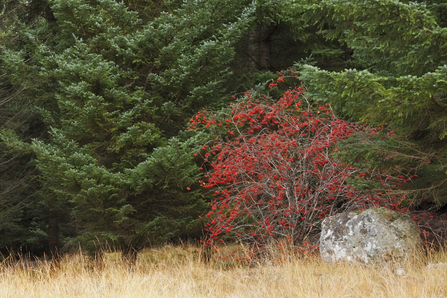
Rowan tree by Guy Edwardes/2020Vision
From the plant’s point of view, berries are simply attractive packaging, designed to tempt other creatures to tuck in and distribute their seeds to other places. Most seeds pass through birds’ intestinal tracts whole, and can be dropped many miles away! Have a look at the ground under a favourite perching spot and you might well find a lot of saplings growing.
Berries’ attractive colouring helps them to stand out so that birds can find them. Red berries contrast well with a green background and tend to grown on evergreens, or plants that produce berries while their leaves are still green. It’s thought that black berries show up better against leaves that have turned yellow or brown.
A winter larder
In the colder weather, when insects, worms and snails are hard to find, berries are essential for the survival of many birds. In fact, berries high in vitamins and calories are the main winter food source for thrushes, blackbirds, redwings and fieldfares among others. Other species, like robins, always prefer a lovely insect or two but will resort to berries when pushed.
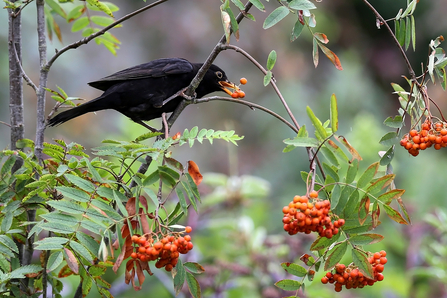
Blackbird on rowan by Margaret Holland
As with everything in the natural world, particular species have formed particular relationships. Thrushes and waxwings prefer berries with smaller seeds like rowan, as they can’t digest the seeds so are really only interested in the flesh. Larger berries like dog-rose hips are generally only suitable for larger birds. Chaffinches and greenfinches particularly like shiny red hawthorn haws, and blackbirds will eat just about anything!
Birds also choose the order in which they eat berries to make sure that their food supply lasts as long as possible. They eat the softer, more perishable fruit first and leave the berries higher in toxins for later in the season. Gardeners will notice that cotoneaster is often the first to be stripped, but holly and ivy berries tend to be left until late winter.
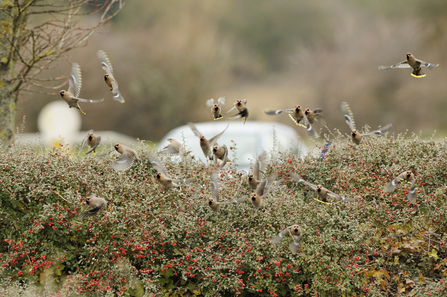
Waxwings on cotoneaster by Terry Whittaker
Mistle thrushes are interesting to follow through the winter months. They are of course named for mistletoe – they’re one of few birds able to stomach mistletoe berries, which are high in toxins. The sticky seeds stick to their beaks, forcing the birds to wipe their beaks on tree branches, ‘planting’ the seeds ready to make a new clump!
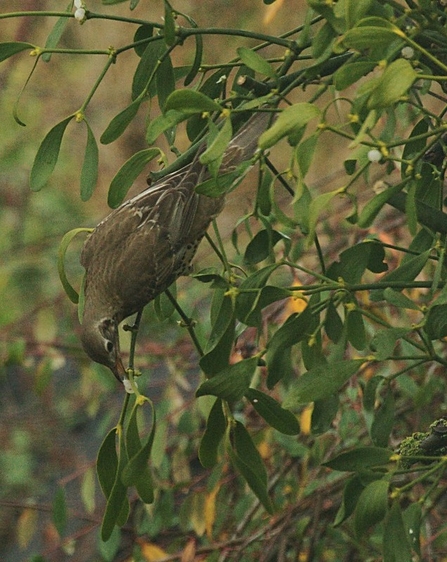
Mistle thrush on mistletoe by Richard Richard CC BY-ND 2.0
Mistle thrushes are also highly territorial, and are known for defending a good mistletoe or holly bush throughout a whole season. If successful, they’re then safe to start nesting in their chosen bush, and can lay eggs as early as February.
It’s not only birds that rely on this seasonal feast. Wood mice and dormice are known to tuck in to blackberries and holly berries in particular. Even foxes will sometimes eat the brightly coloured fruit of spindle.
A tasty treat
Autumn berries are a tasty treat for us humans, too. Foraging puts us in touch with the seasons and our natural environment, and it can be really rewarding to collect and eat from your local area. Remember to forage responsibly – only where there is abundance, and leaving plenty for the wildlife that relies on this food source.
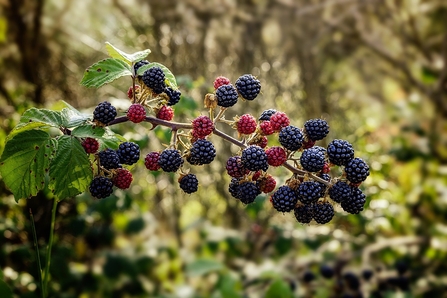
Ripe blackberries
Blackberries are a particular favourite with humans. We’ve been eating them for thousands of years – the seeds are often found in human waste at archaeological digs. You’ve probably heard of blackberry crumble, but you could also try making jam, wine or pickles.
Have you ever noticed that blackberries from different patches taste different? There are over 330 species of bramble in the UK, and they produce fruit and seeds without fertilisation in a process called apomixis. This explains why different tasting species can remain very localised – they don’t interbreed.
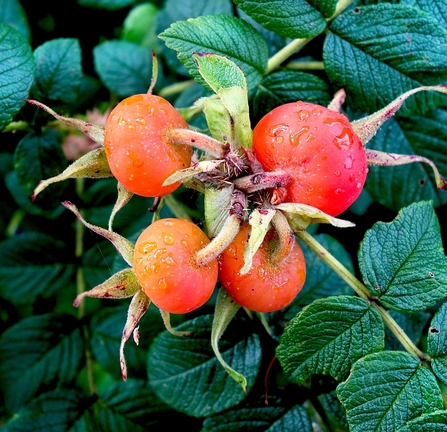
Rosehips by Mabel Amber
Once the blackberries are over, there are still plenty of other things to try. Hawthorn haws must be cooked before eating but make good jellies, wines and ketchup, and rowanberry jelly goes well with meat dishes. Rosehips are particularly high in Vitamin C, so syrups and jellies have traditionally been used as a natural winter booster. Why not give it a try?
But be careful: not all berries are edible for humans. Among others, berries toxic to humans include holly, ivy, spindle and all of the nightshades. Make sure you know what you’re picking, and there are some things best left for the birds!
Attention gardeners!
Here are some top species you could include in your garden to provide for wildlife over winter, as well as beautiful winter colour for you.
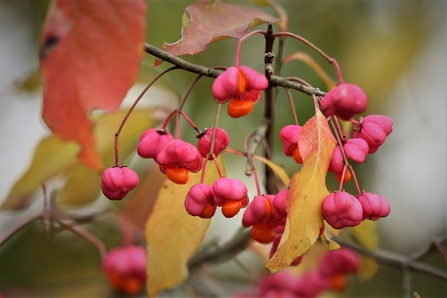
Spindle berries
Cotoneaster – this is absolutely smothered with berries!
Spindle – if you like pink, spindle has nectar-rich delicate pink flowers in spring and attractive pink and orange berries in autumn.
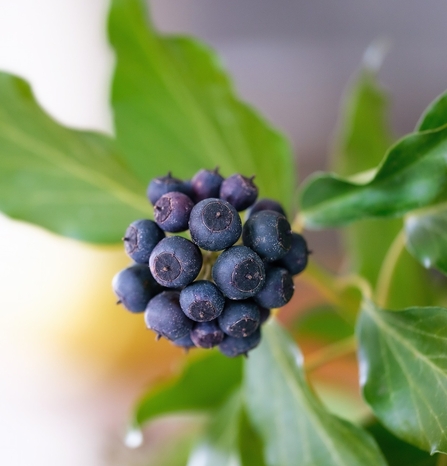
Ivy berries
Ivy – provides late flowers for invertebrates followed by attractive purple berries that are essential late winter food for birds.
Hawthorn – smothered in white flowers in spring and red haws in winter, this is also an important nesting spot for birds.
Holly - who could forget this iconic winter shrub? It also has the advantage of being evergreen.
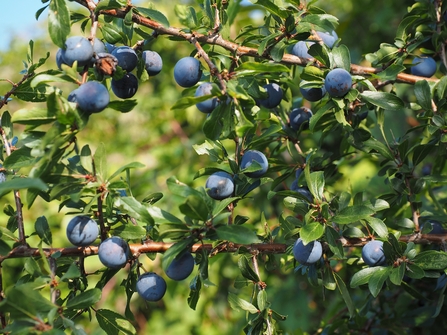
Sloes on blackthorn
Blackthorn – one of the first shrubs to flower in spring, and beautiful dusty purple sloes in autumn
Rowan – also called mountain ash, this native tree provides all sorts of benefits for wildlife, including its iconic orange/red berries.

